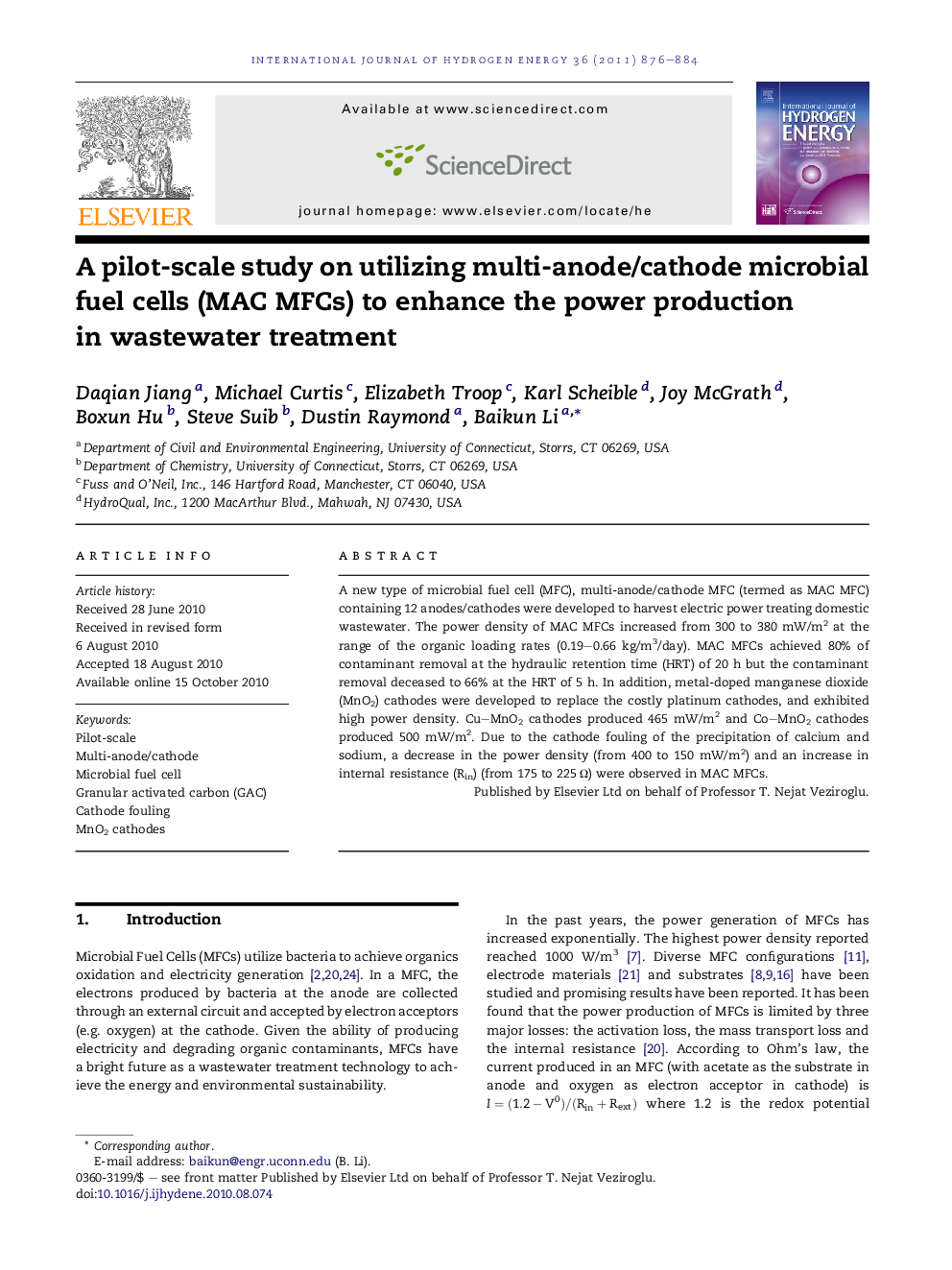| Article ID | Journal | Published Year | Pages | File Type |
|---|---|---|---|---|
| 1277844 | International Journal of Hydrogen Energy | 2011 | 9 Pages |
A new type of microbial fuel cell (MFC), multi-anode/cathode MFC (termed as MAC MFC) containing 12 anodes/cathodes were developed to harvest electric power treating domestic wastewater. The power density of MAC MFCs increased from 300 to 380 mW/m2 at the range of the organic loading rates (0.19–0.66 kg/m3/day). MAC MFCs achieved 80% of contaminant removal at the hydraulic retention time (HRT) of 20 h but the contaminant removal deceased to 66% at the HRT of 5 h. In addition, metal-doped manganese dioxide (MnO2) cathodes were developed to replace the costly platinum cathodes, and exhibited high power density. Cu–MnO2 cathodes produced 465 mW/m2 and Co–MnO2 cathodes produced 500 mW/m2. Due to the cathode fouling of the precipitation of calcium and sodium, a decrease in the power density (from 400 to 150 mW/m2) and an increase in internal resistance (Rin) (from 175 to 225 Ω) were observed in MAC MFCs.
